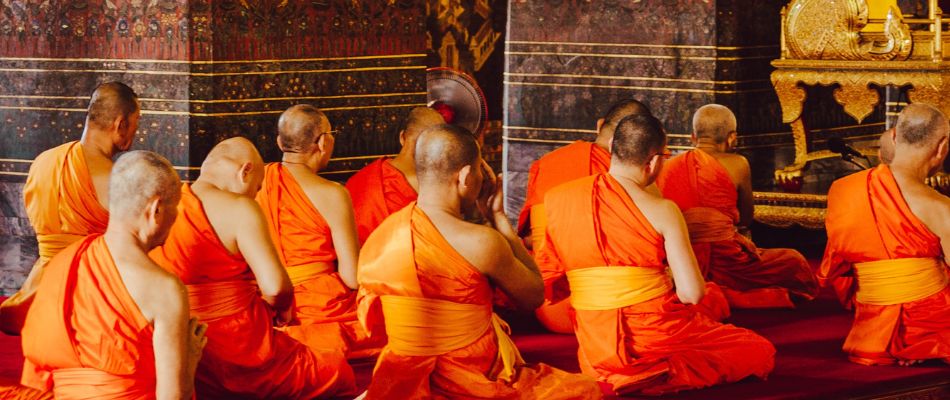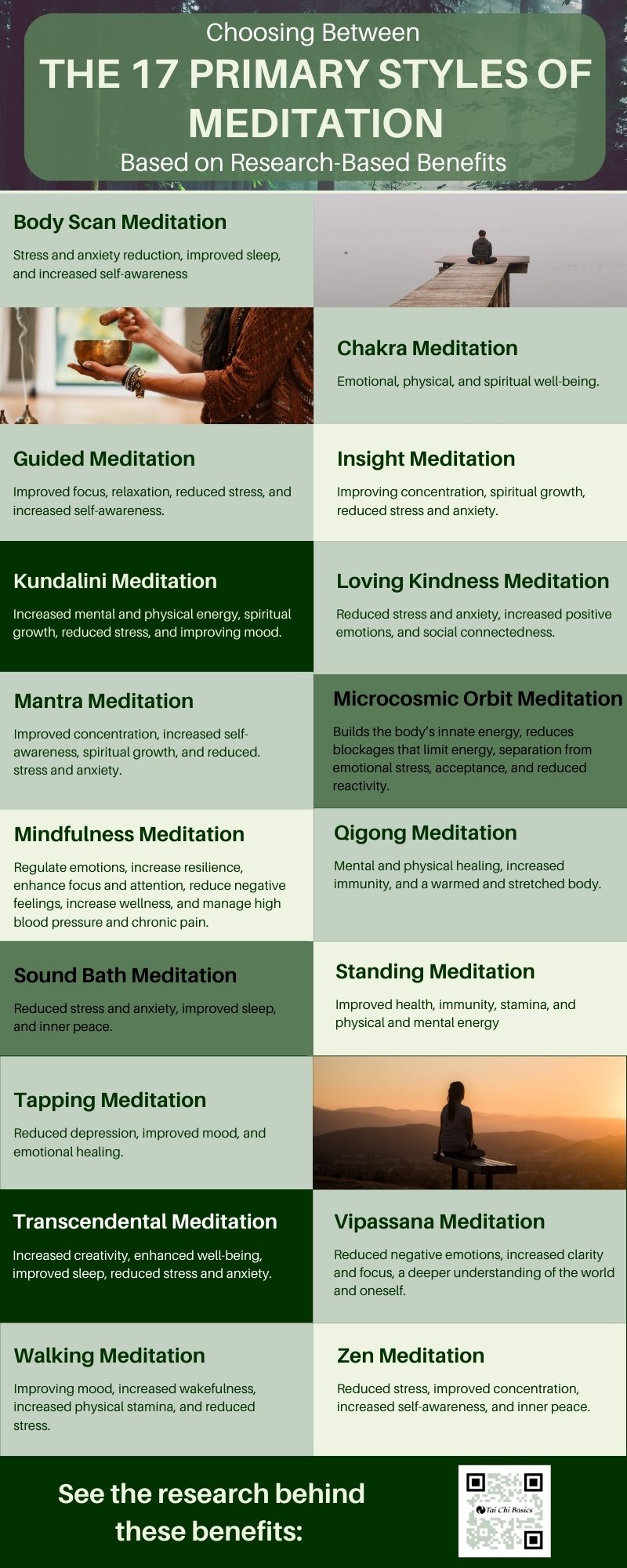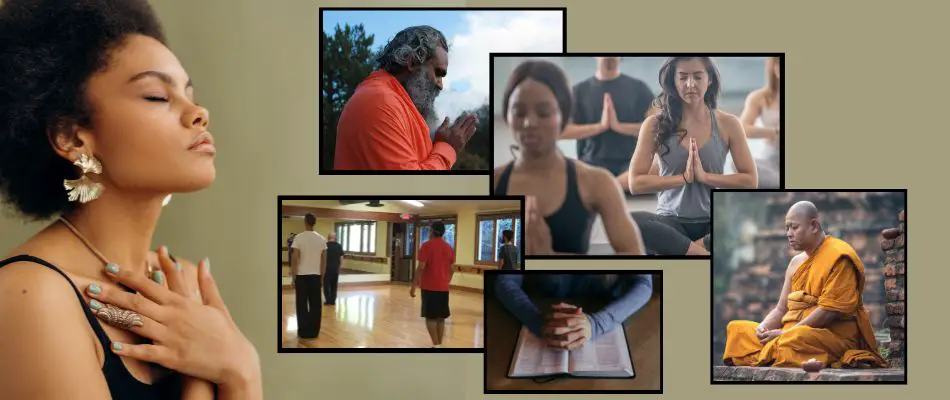The meditator in me couldn’t be more excited about the number of people from all walks of life who are interested in meditation. The thought that children and adults, educators and business professionals, and men and women are all adding meditation to their lives is really positive. But unfortunately, there is a huge gap between the number of people who try and the number of people who actually become successful meditators.
How can this be considering the many scientific studies now validating the benefits across the mental, emotional, and physical spectrum?
I see the gap between the excitement about the benefits of meditation and the poor results as a mismatch between the type of meditation that a person tries out and their overall goals. Most people who are new to meditation see it as a single thing. The truth is that there are dozens of styles which are incredibly different, each with its own benefits.
Most of us start meditating because a friend suggested it or a person we admire does it. But do their goals and their personality align with yours? Are you willing to sit and chant out loud or are you the quiet type? Do you want to be up and moving or sitting? Not a recipe for success if the first type of meditation you try does not match what you want to get out of it or you think it’s bizarre.
Here’s the solution: If we could truly understand what meditation is from a scientific and historical perspective, we could gain the buy-in needed to try it out and stick with it.
Secondly, if we could see a description of the many different styles alongside the benefits of each style, we would have a better chance of trying something out that works for us.
That’s what this essay aims to do. Let’s talk about what meditation is and then highlight 17 of the most common types and what their primary benefits are. For each style, I wrote separate essays for you to find out more about it and how to get started.
Included in this Essay
What is Meditation? From Textbook Definition to True Understanding
Meditation is a practice that involves training the mind to focus and quieting the constant stream of thoughts that can occupy our attention. It is a technique used to cultivate mental and emotional well-being, improve concentration and focus, and enhance overall health and happiness.
Meditating typically involves sitting in a comfortable, upright position, focusing one’s attention on an object such as the breath or a word or phrase, and returning to that focus whenever the mind wanders. There are many different types of meditation such as mindfulness and mantra-based. It has been practiced for thousands of years and has been found to have a wide range of benefits for both physical and mental health.
Most people come to meditation with a preconceived notion of what it actually is. I want to break you away from that thinking right away because it is the quickest way to ruinous results and self-defeat. Harsh words, I know. Here’s the deal though. Meditation is a concept that results in relaxation and improvements in the body’s capacity to use and produce energy. This lets you heal or think before acting which completely changes the decisions you make. The goal is singular. But you can get there in a dozen different ways.
Examples of Meditating
What do you do exactly in meditation? It depends of the style. All types of meditating fall into one of the following seven categories:
- Quiet contemplation
- Use of Sound: Mantras, Tones, Singing, Music, Binaural Beats, With Instruments or Music
- Mindful: Daily activities like eating where you remain present
- Stationary: Sitting, Standing, Lying Down
- Moving: Yoga, Tai Chi, Qi Gong
- Passive: Free thought, Thought observation
- Active: Use of breathing patterns, building pressure in the body, manipulation of the body’s energy, visioning exercises
Hopefully this list highlights a ton of ways to meditate that you may not have considered. To not consider the range of options that are available to you can lead to two big problems.
Problem #1: What you think meditation is, might be limited to 1 or 2 styles.
How you get there may include the image of meditation that pops into your head when you think about it. However, it might not be the best choice for you. An easy comparison is cooking. If you heard that cooking was good for you but only were familiar with what sushi chefs do, can you see how disastrous your attempts to cook would be with any other cuisine?
Problem #2: Expert meditators rely on several different styles
By focusing on one specific style, even the one that interests you most, you are cutting yourself off from a dozen different options that will help you down the road. I haven’t met a single experienced meditator that only uses one style.
Zen meditators often do a martial art.
Tai chi practitioners often do qi gong.
Sitting meditators often do yoga.
Standing meditators can do walking and mindful eating meditations.
Yes, choose one style to begin learning. Don’t float around. But, when you become a consistent meditator, choose a different style to focus on a specific problem. Or, do something opposite. For example, if you do yoga, then sit to meditate. If you sit, stand. We share seventeen different styles down below for your to try out.

What is a Better Definition of Meditation? – A Global Perspective
Yes, meditation can be defined as a technique used to cultivate mental and emotional well-being, improve concentration and focus, and enhance overall health and happiness. However, that really comes up short in describing the global impact that it has had over the centuries through psychological studies and religious pursuits.
To fully grasp its depth and value, it’s easiest to look at it through the lens of the world’s different practitioners.
The Roots of Meditation in Psychology
Meditation has been gaining popularity in recent years, not only as a spiritual practice but also as a tool for improving mental health. In psychology, meditating is often used as a form of mindfulness-based therapy, which has been found to be effective in treating a variety of mental health conditions, including anxiety, depression, and post-traumatic stress disorder (PTSD) (Hoge et al., 2014; Khoury et al., 2013).
Research has also shown that meditating can have positive effects on the brain and body, including reducing stress and improving immune function (Thibodeaux, N. & Rossano, M., 2018). Studies have found that regular meditation practice can lead to changes in brain structure and function, including increased gray matter in areas of the brain associated with attention and emotional regulation (Hölzel et al., 2011). These findings suggest that meditating has the potential to not only improve mental health but also to enhance overall physical well-being.
Is Meditation Mentioned in the Bible?
Meditation has a long history of use in many different religions, including Christianity. Meditating in the Bible is often referred to as a way to deepen one’s connection with God and gain spiritual insights. In the book of Psalms, it says “Blessed is the one…whose delight is in the law of the Lord, and who meditates on his law day and night” (Psalm 1:1-2, NIV). This verse highlights the importance of regularly meditating on God’s teachings as a way to find joy and fulfillment in life.
Throughout the Bible, there are many other references to meditation, including in the book of Joshua, where it says, “Do not let this Book of the Law depart from your mouth; meditate on it day and night, so that you may be careful to do everything written in it. Then you will be prosperous and successful” (Joshua 1:8, NIV). This verse emphasizes the importance of not only meditating on God’s teachings but also putting them into practice in daily life. Overall, meditation can be a powerful way to deepen one’s faith and gain greater insights into God’s teachings.
Are There References to Meditation in Islam?
Meditation has a rich history in Islam and is an important part of Muslim spiritual practice. In Islamic tradition, meditating is often referred to as muraqaba, which means “to watch over.” This practice involves focusing one’s attention on the presence of God, often through the repetition of certain phrases or names of God. Through meditating, Muslims seek to deepen their connection with God and gain a greater understanding of their faith.
One of the most famous examples of meditation in Islamic literature comes from the 13th-century Sufi poet Rumi. In one of his poems, he writes;
“Let the beauty we love be what we do. There are hundreds of ways to kneel and kiss the ground.”
Jalal ad-Din Muhammad Rumi,
This poem highlights the idea that meditation can take many different forms and that the important thing is to find a practice that resonates with one’s own beliefs and values.

The Strong Tie Between Meditation and Buddhism
Meditation is a central practice in Buddhism, and is often referred to as mindfulness. This type of meditation involves training the mind to focus on the present moment and develop greater awareness of one’s thoughts, emotions, and bodily sensations. Through regular practice, Buddhists seek to cultivate a deeper understanding of the nature of reality and gain insights into the true nature of the self.
In Buddhist tradition, there are many different ways to meditate. Each practice is designed to help practitioners develop specific qualities, such as compassion, empathy, and wisdom. Meditating is seen as an essential component of the path to enlightenment in Buddhism, and is practiced by Buddhists around the world as a way to deepen their spiritual practice and gain greater insight into the nature of existence.
Is Meditation Prayer?
Meditation can be a powerful tool for deepening one’s prayer practice. By quieting the mind and focusing on the presence of God or a higher power, meditating can help individuals to connect more deeply with their faith and develop a greater sense of spiritual awareness. By incorporating meditation into their prayer routine, individuals may find that they are able to connect more deeply with their faith and gain greater insights into their spiritual path.
While meditation and prayer are often used together and can be complementary practices, it’s important to note that they are not the same thing. Prayer is typically focused on communicating with a higher power and expressing one’s hopes, fears, and desires. Meditation, on the other hand, is focused on quieting the mind and developing greater awareness of one’s thoughts and emotions. While prayer can be a form of meditation, and meditation can be a form of prayer, they are distinct practices with different goals and techniques. It’s important to find the right balance of both practices that works best for you and your faith journey.
Meditation in Yoga
In yoga, meditating can be incorporated into the session or done during the final relaxation period known as Savasana. During this time, individuals lie down in a comfortable position and focus on their breath, letting go of any thoughts or distractions.
Through regular practice of yoga and meditation, individuals may find that they are able to develop greater physical and mental flexibility, as well as a greater sense of inner peace and calm. Meditating can be a powerful tool for reducing stress and anxiety, improving sleep quality, and promoting overall physical and mental health. By incorporating it into their yoga practice, individuals may be able to deepen their mind-body connection and gain greater insight into their physical and emotional state.

What is the Purpose of Meditation? – How Does it Work?
I want to share one of the most intriguing and counterintuitive aspects of meditation:
The goal of meditation is to derive mental, emotional, and physical health improvements from sitting or standing in quiet contemplation.
This idea seems far fetched because we equate movement and exercise with improved physiological markers. And we often equate mental and emotional improvements with cognitive tasks or interacting with others. But the research is clear, there are categorical mental, emotional, and physical benefits of meditating that can be measured in diagnostic markers like blood pressure, glucose levels, ratings of contentment and happiness, and improvements in thinking.
To understand how meditating can lead to positive changes in our physical body, we need first to understand the relationship between our tissues and fluids and the systems that are in place to regulate the chemicals that result in us feeling and being measurably healthier.
Think of the body as a huge factory producing goods. Materials come in one door, diligent workers on the inside mix, match, cut, and assemble these materials, package them up and send them out the door on the other end. On good days, there are enough workers who are all happy to undertake their jobs. There are the right kind and number of materials to produce the brightly colored, fluffy pillows they are exporting, or whatever your brain sees them producing.
Now, imagine that the working conditions make doing the job difficult. Or what if many get sick? What if the wrong materials show up or they need to substitute something of less quality? What if they had to shut down the furniture line to use that stuffing for the pillows? What if they have to send the pillows out the door a bit less fluffy?
Your body is cataloging all of the materials it takes in through air and food needed to create enzymes and chemicals that you use in the body’s processes such as digestion, thinking, and movement. If it doesn’t have what it needs, it borrows from storehouses in tissues like bone, muscle, and fat to cover a hopefully temporary deficit.
Here’s the kicker, stress and anxiety use up more materials due to an increase in shallow breathing (respiratory rate), an increase in the flow of blood, and changes in digestion. Worse yet, they cause behavior that reduces the inflow of new materials or reduces the quality. For example, we breathe less fully when we are constricted with stress, bent over our keyboards. Many people skip meals, drink less water, and sleep more poorly which is a crucial time for the body to make tissue repairs.
Chronic stress and anxiety has a cascading effect because it can lead to bad decisions. The shortage of good “materials” can fuel cravings for quick energy sources or behaviors like drinking too much, zoning out in front of a screen. I don’t want to sound like a scrooge here. Healthy people eat sugar, drink alcohol, and watch TV. However, they are making a choice, their physical system isn’t begging them to do it.
So by meditating, you are giving your body the materials and time to produce health. You are also reducing the body’s need to consume more energy or stop you from using more energy through fatigue and tightness.

Choosing a Type of Meditation That is Right for You
I truly believe the world benefits from more people meditating. It just doesn’t look the same for all of us. And want a quick insider’s tip? Those of us who made it over the hump and are continual mediators, do multiple styles of meditations. We add sitting, standing, moving, and exotic sets to our routine to address ailments, injuries, tough times in life, changes in levels of energy, and even boredom.
Meditation is too fascinating and too powerful to not give it a try. We just need to get you your first win. These are the primary styles of meditation. Your job is to find something that sounds interesting to you and has been shown to improve something that you want to change in your life.
And by all means, if something doesn’t work after a couple months, try something new!
17 Primary Types of Meditation
| Types of Meditation | Definition | Primary Benefits of Each Style |
|---|---|---|
| Body Scan Meditation | Body scan meditation is a form of meditation that involves focusing the mind on different parts of the body to cultivate awareness and relaxation. | Stress and anxiety reduction, improved sleep, and increased self-awareness |
| Chakra Meditation | Chakra meditation is a form of meditation that involves focusing the mind on the different energy centers in the body to promote balance and healing. | Emotional, physical, and spiritual well-being. |
| Guided Meditation | Guided meditation is a form of meditation that is led by a teacher or audio recording. It involves visualizing a peaceful scene, engaging in relaxation exercises, and receiving guidance to focus the mind. | Improved focus, relaxation, reduced stress, and increased self-awareness. |
| Insight Meditation | Insight meditation is a Buddhist meditation practice that involves observing thoughts, emotions, and sensations without judgment to cultivate insight and self-awareness. | Improving concentration, spiritual growth, reduced stress and anxiety. |
| Kundalini Meditation | Kundalini meditation is a form of meditation that involves chanting mantras, performing yoga poses, and practicing deep breathing techniques to awaken and balance the energy in the body. | Increased mental and physical energy, spiritual growth, reduced stress, and improving mood. |
| Loving Kindness Meditation | Loving kindness meditation is a form of meditation that involves focusing the mind on cultivating feelings of compassion, kindness, and empathy towards oneself and others. | Reduced stress and anxiety, increased positive emotions, and social connectedness. |
| Mantra Meditation | Mantra meditation is a form of meditation that involves repeating a word or phrase to quiet the mind and cultivate inner peace. | Improved concentration, increased self-awareness, spiritual growth, and reduced. stress and anxiety. |
| Microcosmic Orbit Meditation | The Microcosmic Orbit is a Taoist meditation and was introduced to the West and popularized by Master Mantak Chia. It is a seated meditation where the practitioner circles energy through the torso and head to clear energy pathways and build energy and the body’s health center in the lower abdomen. Practitioners advance to learning the Macrocosmic Orbit which adds moving energy through the legs and arms with the circling of energy in the torso. | Builds the body’s innate energy, reduces blockages that reduce our energy, separation from emotional stress, acceptance, and reduced reactivity. |
| Mindfulness Meditation | Mindfulness meditation involves focusing one’s attention on the present moment and being aware of one’s thoughts, feelings, and sensations without judgment. | Regulate emotions, increase resilience, enhance focus and attention, reduce negative feelings, increase wellness, and manage high blood pressure and chronic pain. |
| Qigong Meditation | Qigong meditation is primarily a Taoist form of meditation involving moving postures that coordinate the movements of the arms and torso with the breath. Most sets contain 3-9 movements that are repeated several times. Unique to qigong meditation is the building, sensing, and manipulation of the body’s energy. | Mental and physical healing, increased immunity, and a warmed and stretched body. |
| Sound Bath Meditation | Sound bath meditation is a form of meditation that involves listening to sounds produced by various instruments, such as gongs, singing bowls, or chimes, to promote relaxation and well-being. | Reduced stress and anxiety, improved sleep, and inner peace. |
| Standing Meditation | Standing meditation involves holding a standing posture for 3-45 minutes while maintaining relaxed breath and typically concentrating on what the body is experiencing. Deep, more strenuous postures are held for the shorter time period whereas tall, relaxed postures are performed for extended periods of time. | Improved health, immunity, stamina, and physical and mental energy |
| Tapping Meditation | Tapping meditation, also known as Emotional Freedom Technique (EFT), involves tapping specific acupressure points while repeating affirmations to release negative emotions and promote well-being. | Reduced depression, improved mood, and emotional healing. |
| Transcendental Meditation | Transcendental Meditation is a technique that involves repeating a specific mantra or sound to quiet the mind and reach a deep state of relaxation. | Increased creativity, enhanced well-being, improved sleep, reduced stress and anxiety. |
| Vipassana Meditation | Vipassana meditation is a Buddhist meditation practice that involves observing the sensations in the body to develop insight and self-awareness. | Reduced negative emotions, increased clarity and focus, a deeper understanding of the world and oneself. |
| Walking Meditation | Walking meditation is a form of meditation that involves walking slowly and mindfully while focusing on the sensations in the body and surroundings. | Improving mood, increased wakefulness, increased physical stamina, and reduced stress. |
| Zen Meditation | Zen meditation is a form of Buddhist meditation that involves sitting in a specific posture, focusing on the breath, and observing thoughts without judgment. | Reduced stress, improved concentration, increased self-awareness, and inner peace. |
How to Get Started Meditating and Reap the Rewards
Ready?
If you are completely new to mediation, I put together a list of classes and courses that I have found that are accessible to anyone, anywhere, at any level. I show you where to find great classes at the end if you don’t have any nearby you:
If you are interested in qigong meditation, it is one of the fastest growing eastern practices. Moving practices like qigong, tai chi, and yoga are definitely the way to go if you sit all day, cannot sit still, or are having difficulty concentrating. Read:
Lastly, if you already have a practice and want to add something short and powerful, learn about standing meditation.
Thank you for educating yourself. By now you probably see that there is no one-size-fits-all to experience the physical, emotional, or mental benefits from meditating.
Identify what you want to improve most.
Identify the style of meditation that you are physically capable of doing, that is available, and interesting to you.
Commit to enough time (1-2 months) to experience the benefits but try a different type, style, or length if you are not consistent.
Welcome to the world of meditators and I look forward to hearing how you benefit from your practice!
References:



